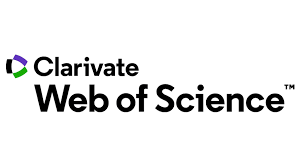Akhmedova Zaripat A.,
Researcher
G. Tsadasa Institute of Language, Literature and Art
Dagestan Federal Research Center of the Russian Academy of Sciences
e-mail: zaripat.akhmedova.63@internet.ru
https://orcid.org/0009-0005-5850-0053
The article provides a scientific and critical analysis of the phenomenon of children’s poetry by the Kumyk poet Anvar Adzhiev (1914–1991) and the role of illustration in revealing the plot of a literary work. In introducing children to the national and cultural tradition, the text and its artistic design are of great importance. This is especially true for a poetic work, since the metro-rhythmic, rhyme, strophic priorities of poetry, the use of a lyrical child hero or a fairy-tale character, as well as its visual depiction, reveals the playful concept of the work for children. The main essence of poetry and painting for children is humanism associated with the depiction of a positive hero and the fight against negativity. And this indicates that the poet bases his work on knowledge of children’s psychology. Therefore, the problem of the interaction of literature and painting, the visual and verbal world in illustrations is especially vital when it comes to poetry for children, in which an important place is occupied by the work of the 20th century Kumyk poet Anvar Adzhiev. His children’s poetry, which has an educational meaning, reflects current topics and images, positively motivating artistic word accessible to children, colorful, nationally distinctive spiritual image of the Dagestan society of the 20th century. In this process, not only the text plays a special role, but also the images created by the artist. The connection between the poet’s poetic text and the disclosure of the plot conveyed by the artist through the depiction of figures, animal gestures, actions, behind which human actions are guessed, play an important role in the formation of the child’s personality from the early periods of his development.
Keywords: Anvar Adzhiev, Azamat Nadirov, Kumyk children’s poetry, interaction of poetry and painting
References
1. Belinsky V.G. Polnoe sobranie sochinenii: v 13 t. Moscow: Izd-vo AN SSSR, 1953. T. 2. 768 s.
2. Bobrinskaya E.A. Poeziia i zhivopis’ v russkom avangarde // Entsiklopediia russkogo avangarda / pod red. A.D. Sarabyanova. Moscow: RA: Global Expert & Service Team, 2013. 816 s.
3. Mayakovsky V.V. O noveishei russkoi poezii // Polnoe sobranie sochinenii: v 13 t. Moscow: Gos. izd-vo khudozh. lit, 1955–1961. T. 1. S. 365–366.
4. Mayakovsky V.V. Kak delat’ stikhi // Polnoe sobranie sochinenii: v 13 t. Moscow: Gos. izd-vo khudozh. lit., 1955–1961. T. 12. S. 81–117.
5. Bakhtin M.M. Estetika slovesnogo tvorchestva. Moscow: Iskusstvo, 1986. 445 s.
6. Vinogradov V.V. Stilistika. Teoriia poeticheskoi rechi. Poetika. Moscow: Izd-vo AN SSSR, 1963. 462 s.
7. Lotman Yu.M. Analiz poeticheskogo teksta: struktura stikha. Leningrad: Prosveshchenie, 1972. 271 s.
8. Leontiev A.A. Psikholingvisticheskie edinitsy i porozhdenie rechevogo vyskazyvaniia. Moscow: URSS, 2010. 211 c.
9. Levidov A.M. Avtor — obraz — chitatel’. Leningrad: Leningradskii un-t, 1977. 360 s.
10. Skatkin M.N. Problemy sovremennoi didaktiki. Moscow: Pedagogika, 1980. 96 s.
11. Bartel’ V.V. Tekst detskogo khudozhestvennogo proizvedeniia kak kul’turologicheskii portret epokhi: avtoref. dis. … kand. filol. nauk. Moscow, 2002.
12. Abukov K.I. Natsional’nye literatury narodov Dagestana i Severnogo Kavkaza v sisteme vzaimosviazei. Makhachkala, 1993. 242 s.
13. Kovaleva T.V. Evoliutsiia russkoi poezii dlia detei: stikhotvorcheskii aspekt: avtoref. dis. … d-ra filol. nauk. Moscow, 2006.
14. Sorokin Yu.A. Vzaimodeistvie retsipienta i teksta: teoriia i praktika // Funktsionirovanie teksta v lingvokul’turnoi obshchnosti. Moscow, 1978. S. 67–102.
15. Abukov K.I. Prodolzhenie zemnogo puti Anvara Adzhieva (k 85-letiiu so dnia rozhdeniia) // Izbrannoe / A. Adzhiev. Makhachkala: Novyi den’, 2001. S. 3–7.
16. Adzhiev A. Izbrannoe. Makhachkala: Dagestanskoe knizhnoe izd-vo, 2008. T. 2. 488 s.
17. Vernigorova E.S. Khudozhestvennaia illiustratsiia kak sposob interpretatsii literaturnykh tekstov // Kul’turnoe nasledie Rossii. 2015. No. 1. S. 46–50.
18. Borodina S.D., Emanova Yu.G., Iao M.K. Illiustratsiia kak sredstvo dostizheniia relevantnosti teksta: mezhotraslevoi podkhod // Filologiia i kul’tura. 2013. No. 4 (34). S. 260–266.
19. Mingazova L.I. Spetsifika i unikal’nost’ poezii dlia detei Roberta Minnulina // Mir nauki i mysli. 2023. No. 2. S. 60–67.
20. Belinsky V.G. O detskikh knigakh // Sobranie sochinenii: v 9 t. Moscow: Khudozh. lit., 1978. T. 3. S. 62–63.
21. Adzhiev A.A. Boltlivaia utka: poema-skazka. Makhachkala: Novyi den’, 2008. 24 s. Na kum. iaz.
22. Lansere E. Neskol’ko slov o moei zhizni na Kavkaze // Tvorchestvo. 1936. No. 1.

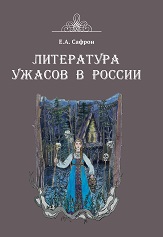
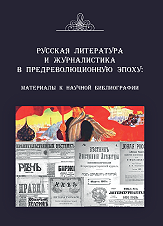
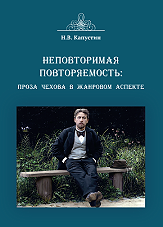
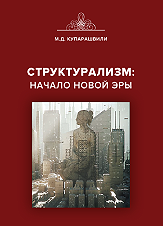
.png)
